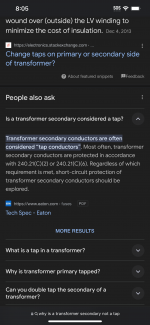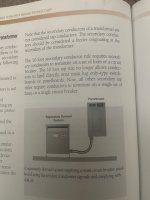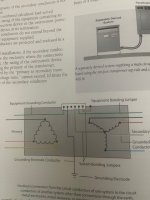It just doesn’t seem clear with NEC when to consider a transformer output secondary leads or transformer secondary tap leads. Look at the first picture. The above text explains that these are secondary conductors but on the corresponding picture its labeled secondary tap connectors?
Also take note of the second picture, where the system bonding jumper is placed at the transformer instead of the first panel disconnect which is especially required if the separately derived transformer is located outdoors.
I just feel that most people would not understand if you did not install the system bonding jumper at the first panel. Such as bonding the first breaker panel neutral buss, grounding electrode conductor, ground buss, equipment ground conductors and the first disconnect cabinet all together.



